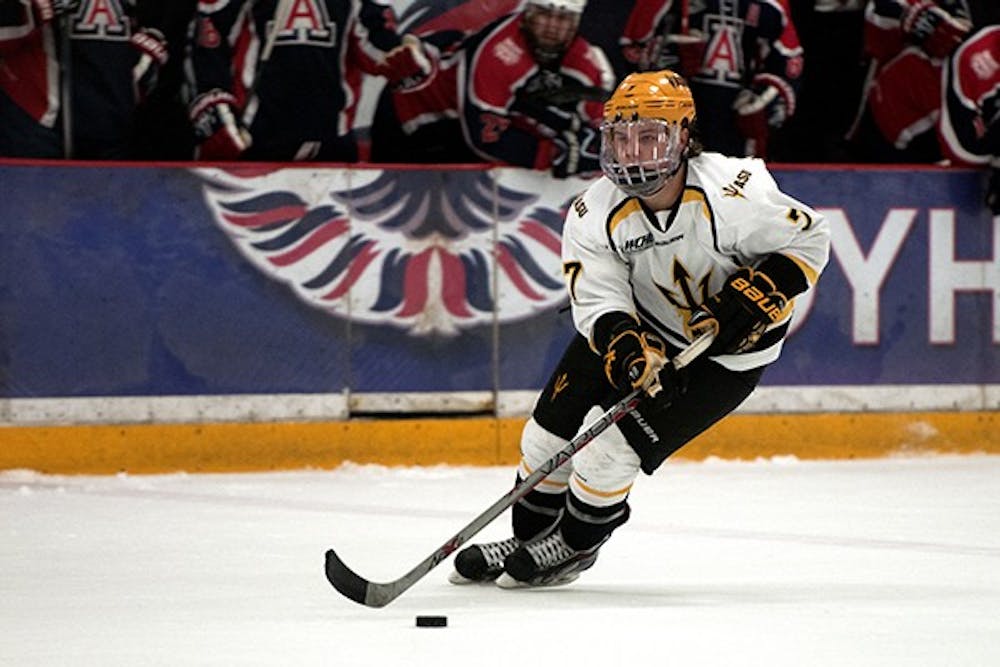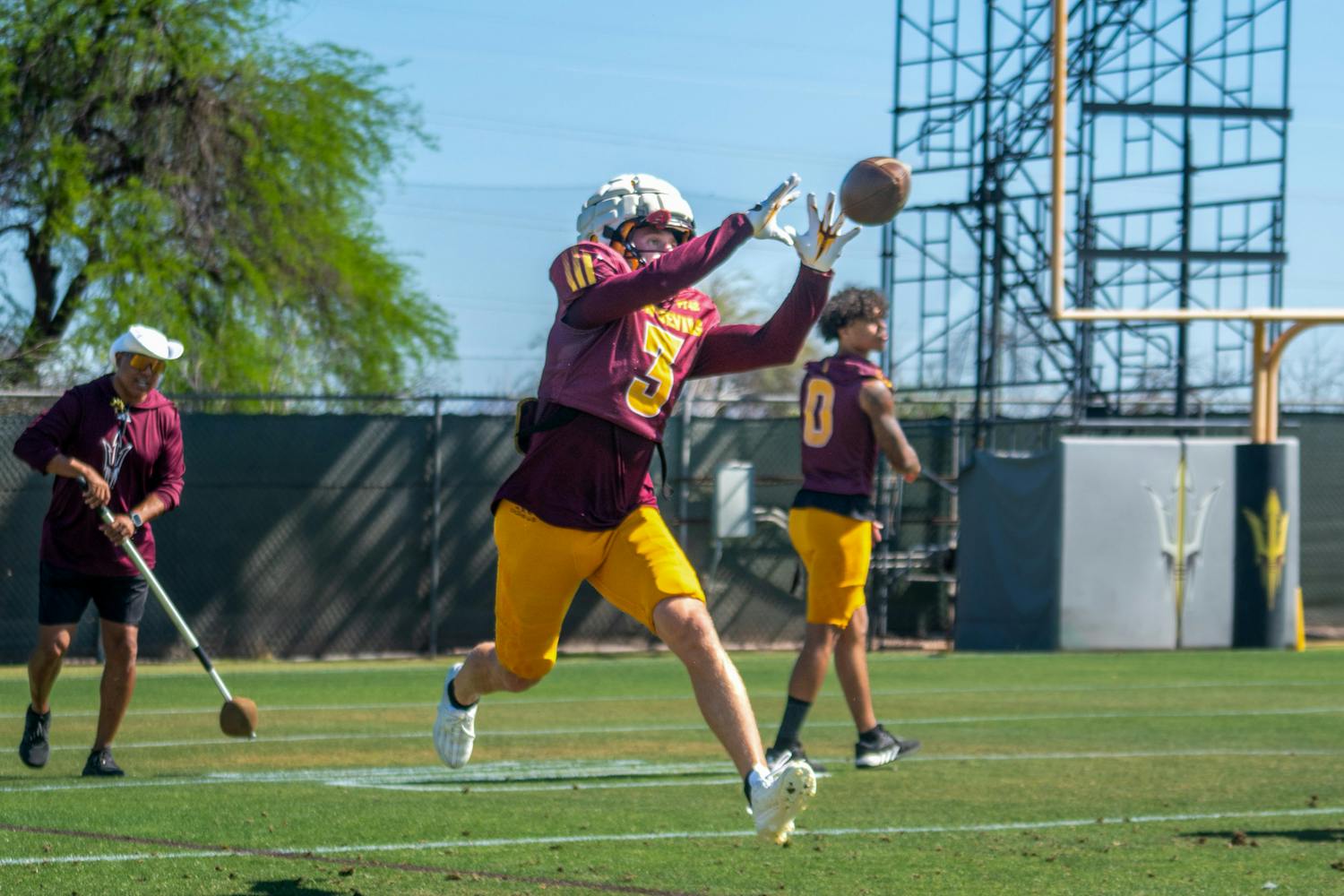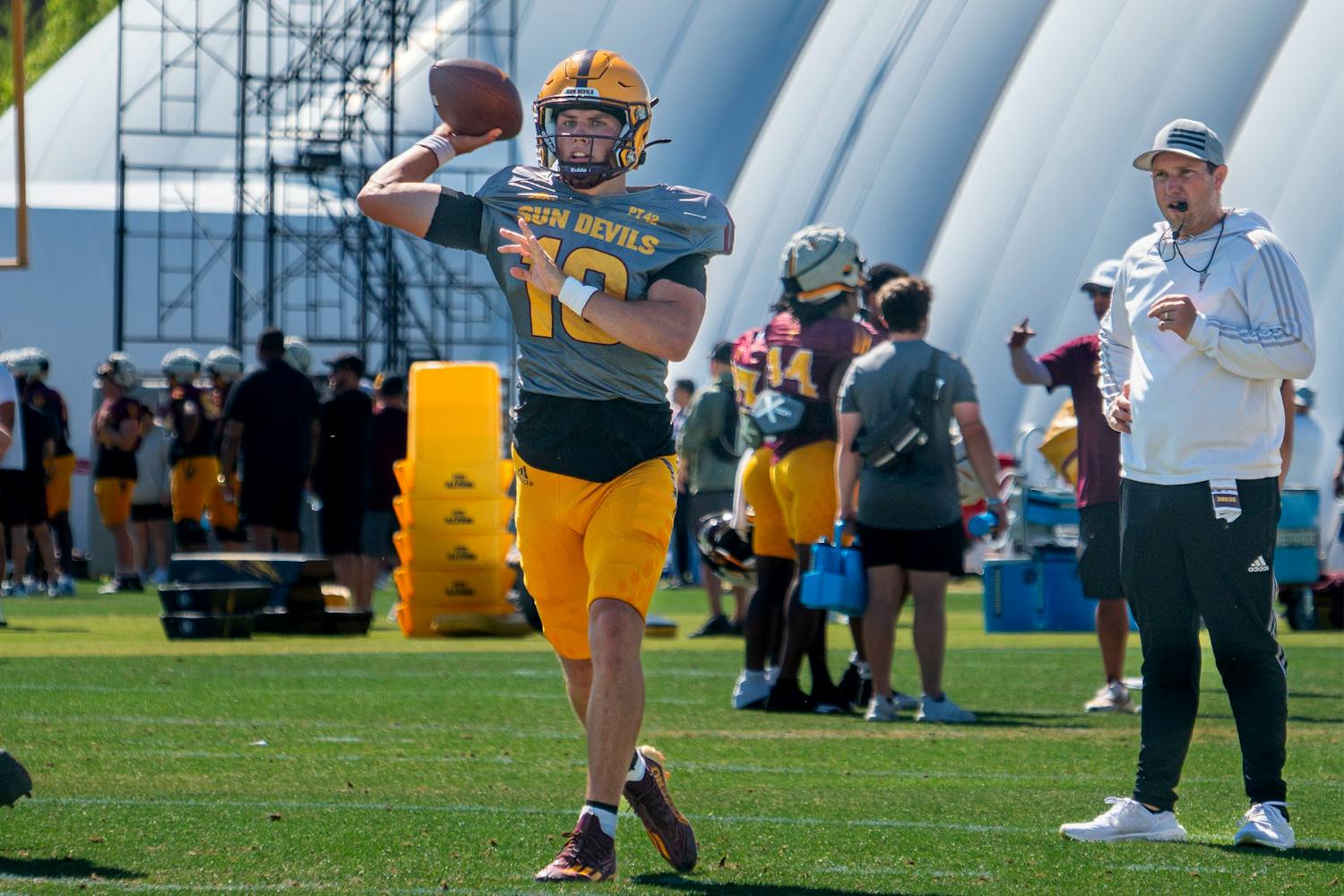 Defender Connor Schmidt looks for an open teammate at a home game against UA. ASU beat UA 4-1 on Oct. 10, 2014. (Photo by Mario Mendez)
Defender Connor Schmidt looks for an open teammate at a home game against UA. ASU beat UA 4-1 on Oct. 10, 2014. (Photo by Mario Mendez)Welcome to the show, ASU hockey.
The club hockey team is transitioning into NCAA Division I after this season, following a $32 million donation from a group led by Don Mullet, father of former player Chris Mullet.
In 2015-16, ASU will begin the move, facing a combination of NCAA Division I teams and ACHA club schools. The Sun Devils won the ACHA national title in 2013-14. During 2016–17, ASU will be an independent school in Division I and in 2017-18 and beyond, it will have conference affiliation.
For Title IX purposes, ASU will be adding a 24th sport “shortly,” ASU athletic director Ray Anderson said. Women’s lacrosse is the athletics department’s primary target for 2016, with rowing as another option. The NCAA allows women’s lacrosse 12 scholarships, rowing 20 and men’s hockey 18. ASU recently added sand volleyball, which has six.
Promoting hockey as a varsity sport makes ASU the guinea pigs in testing NCAA hockey in a large, non-traditional hockey market. It’s worth noting that Alabama-Huntsville has a Division I program, but the school is significantly smaller than ASU. ASU is the only Pac-12 school to adopt Division I hockey and it’s the first Arizona program to have it since NAU cut its team in the mid-1980s.
ASU’s NCAA addition could create a ripple effect in the conference, Anderson said.
“It's not without risk, but part of our DNA is to be entrepreneurial, to be creative, to be a little bolder than some others might be willing to do,” Anderson said. “That's quite frankly why the Pac?12 is excited that Arizona State is stepping up to start varsity hockey, because they haven't been able to get some of the other universities to quite take the move.”
One approach in gauging hockey’s interest in the market is to look at the local NHL team. In the 1990s, NHL teams arrived in non-traditional markets, such as Arizona, with mixed results. Amid ownership questions and a bad stadium location, the Coyotes have finished last or next to last in NHL attendance each of the past five seasons.
By that account, it seems like it wouldn’t be a great fit to put a hockey team in this oversaturated sports market, already with four major professional sports teams, plus colleges. That may not matter if the top boosters have deep enough pockets.
Having an NHL team in Arizona, though, advanced the sport locally. Hockey participation in Arizona grew 18 percent in the last year, according to USA Hockey.
“The growth of the game in Arizona is largely in part due to the (Arizona) Coyotes, and the popularity of the sport on the West Coast is due to the NHL teams,” ASU coach Greg Powers said. “Whether or not they are in flux, it doesn't affect us. We are looking to be our own entity and provide a brand of hockey, a very exciting, hard?hitting, fast?paced brand of college hockey that doesn't exist here in the Valley now outside of our ACHA Division I program. But now Valley hockey fans have the opportunity to see college hockey at the very highest level, and I think they're going to really like what they see.”
Statistically, NCAA hockey has drawn well in the 59 schools that support it in Division I compared to other sports. The average attendance for all NCAA Division I hockey games last season was 3,585 people. That’s more than every ASU program last season outside football and basketball, the main revenue producing sports.
Going forward, the most important issue is figuring out where the team will play. Currently, the team is at Oceanside Ice Arena, a few miles off campus, but the facility's capacity to hold 500 people is half that of any other Division I program.
Powers’ preference is to play on campus, though it may be difficult to manage the occupants’ schedules at Wells Fargo Arena, where men’s basketball, women’s basketball, volleyball, wrestling and gymnastics all play, aside from the issue of implementing an ice playing surface.
“I can tell you that my goal personally as the head coach is to be on campus as soon as possible, and if somebody said this day wasn't possible, they were wrong, and one day, hopefully soon, we can find the support to be on campus in an environment that our student body can really enjoy college hockey,” he said.
Someday that may be the case. But the stadium question has yet to be resolved, which is obviously a major component of fan attendance.
Reach the columnist at jmjanss1@asu.edu or follow him on Twitter @jjanssen11
Like State Press Sports on Facebook and follow @statepresssport on Twitter




